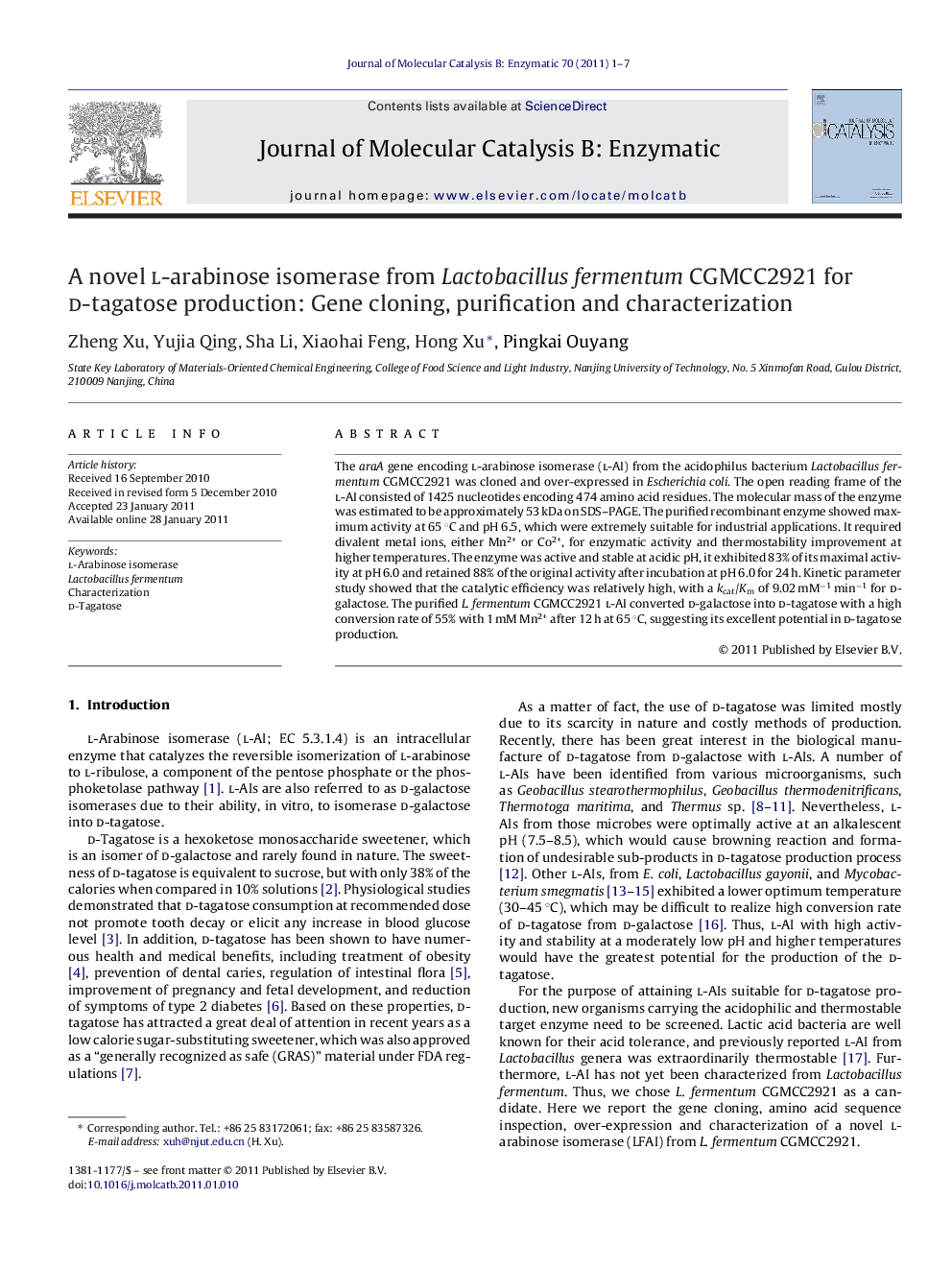| Article ID | Journal | Published Year | Pages | File Type |
|---|---|---|---|---|
| 70260 | Journal of Molecular Catalysis B: Enzymatic | 2011 | 7 Pages |
The araA gene encoding l-arabinose isomerase (l-AI) from the acidophilus bacterium Lactobacillus fermentum CGMCC2921 was cloned and over-expressed in Escherichia coli. The open reading frame of the l-AI consisted of 1425 nucleotides encoding 474 amino acid residues. The molecular mass of the enzyme was estimated to be approximately 53 kDa on SDS–PAGE. The purified recombinant enzyme showed maximum activity at 65 °C and pH 6.5, which were extremely suitable for industrial applications. It required divalent metal ions, either Mn2+ or Co2+, for enzymatic activity and thermostability improvement at higher temperatures. The enzyme was active and stable at acidic pH, it exhibited 83% of its maximal activity at pH 6.0 and retained 88% of the original activity after incubation at pH 6.0 for 24 h. Kinetic parameter study showed that the catalytic efficiency was relatively high, with a kcat/Km of 9.02 mM−1 min−1 for d-galactose. The purified L. fermentum CGMCC2921 l-AI converted d-galactose into d-tagatose with a high conversion rate of 55% with 1 mM Mn2+ after 12 h at 65 °C, suggesting its excellent potential in d-tagatose production.
Graphical abstractFigure optionsDownload full-size imageDownload as PowerPoint slideResearch highlights► LFAI showed maximum activity at 65 °C and pH 6.5. ► LFAI behaved preferable stability at acidic pH and higher temperatures. ► The catalytic efficiency for d-galactose (kcat/Km = 9.02 mM−1 min−1) was relatively high. ► LFAI required Mn2+ and Co2+ for enzymatic activity. ► The thermostability of LFAI was proved to be Mn2+ dependent.
